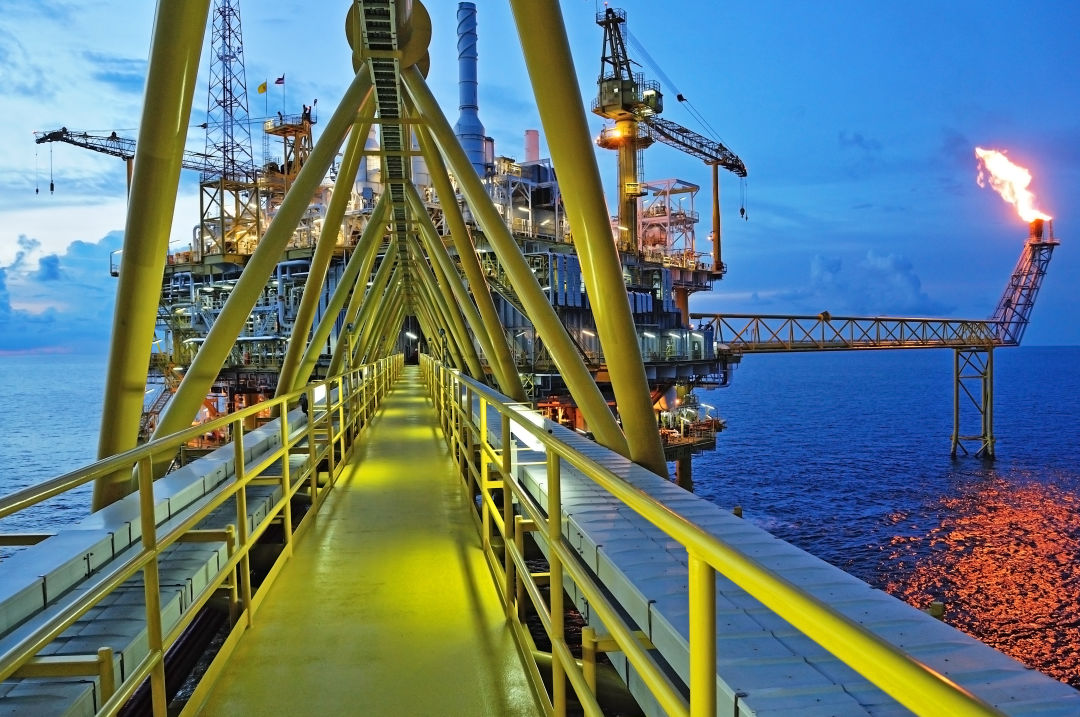Oregon Bans Offshore Drilling.... Again?

Just four months into office in 2017, President Trump signed his 30th Executive Order to date. Executive Order 13795 declared the re-opening of America’s Outer Continental Shelf to offshore oil and gas exploration—a move that aimed to reverse Obama’s late-in-office invocation of section 12 (a) of the Outer Continental Shelf Lands Act of 1953.
What Obama had done, you see, was interpret that 1953 law to effectively pull all oil rigs then operating in American-controlled waters in the Arctic and Atlantic: both territorial (oceans are state-controlled up to three miles offshore) and federal (up to 200 miles). But Trump wanted to get the Atlantic and Arctic oceans, um, drilled, baby.
The Pacific ocean wasn’t specifically mentioned in Trump’s order. But that didn't prevent panic mode from setting in across the state to protect the state’s own territorial waters—waters that have been drill-free since the mid-1960s.
At the time of Trump’s 2017 executive order, Oregon’s waters had an existing safeguard: a state bill signed into law in 2010 by then-Governor Ted Kulongoski that prohibited offshore drilling in our territorial seas. Problem: Oregon House Bill 3613 wrote its own expiration date of January 2, 2020—stoking fears, in 2017, that a new generation of emboldened energy speculators might start poking around the Pacific Ocean.
While Oregon policymakers examine their options, the federal government upped the ante in 2018, with the debut of former US Interior Secretary Ryan Zinke’s 2019–2024 National Outer Continental Shelf Oil and Gas Leasing Program. The DOI program formalized the Trump Administration's intent to offer new drilling and exploration leases up and down the Pacific coast—the first original leases on offer in the Pacific since 1984.
Zinke, controversially, offered just one state (Florida) an exemption; Oregon Governor Kate Brown was one of many state leaders who jumped to request an exemption similar to the one received by Florida. And while Brown's petition was denied, Zinke arguably offered us a bit of cold comfort when he testified in March 2018 before the Senate Energy and Natural Resources Committee that Oregon, Washington, and California pretty much have "no known resources of any weight."
Governor Brown wasn't reassured. Instead, on October 24, 2018, she enacted Executive Order 18-28 (even though Kulongoski's law was still in effect and wouldn’t expire for fourteen months). We’re not clear exactly why—the order’s language reads like light saber-rattling—warning the feds that "several provisions in state and federal law authorize state agencies to object to federal leasing on the OCS” without naming the provisions.
The sharper object came out three months later, when Oregon Senate Bill 256 hit the floor, seeking to make a version of Brown's Executive Order with no sunset date. The biggest difference between the Kulongoski-era law and the current bill might lie in the closing of a loophole that could foil the plans of any would-be driller off the Oregon coast.
“Normally there’s a pipeline that runs through state waters and allows transfer of that oil onto land,” says Ashley Blacow-Draeger, communications director for OCEANA, an international marine advocacy organization that helped craft the Oregon legislation. “The State of Oregon is now banning pipelines from being installed through state waters, making it really cost-prohibitive.”
Gov. Brown signed SB 256 into law on March 27, making Oregon the sixth coastal state (to date) to issue a moratorium on offshore drilling in response to Trump’s executive order. (The most recent, in September 2018, being California Governor Jerry Brown, who signed a similar bill barring the creation of new oil or gas endeavors in its coastal water, while allowing 27 current oil rig leases to play out.)
Meanwhile, the battle over offshore fossil fuel extraction continues with rumors that Zinke's likely replacement, current Acting Interior Secretary David Bernhardt (a former oil lobbyist), is preparing to issue a new National Outer Continental Shelf Oil and Gas Leasing Program proposal. Meanwhile, on March 30, an Alaskan judge complicated Trump's Executive Order by ruling that section 12 (a) of the Outer Continental Shelf Lands Act only gives presidents the right to remove oil rigs—and not permission to re-lease the area, unless authorized by Congress.
It’s a head-spinner, for sure. And while the risks of offshore drilling gone wrong are clear and visceral (two words: Deepwater Horizon), perhaps the better question might be whether it makes economic sense to open the Pacific Northwest for drilling in the first place?
Consider the Trump Interior Department’s claim that Obama protections are withholding a theoretical 810 million barrels of “undiscovered technically recoverable" oil and gas resources off the Pacific Northwest coast. Then, compare that to the 1.65 billion barrels recovered from the Federal Gulf of Mexico every single day—making our little corner of exploitable ocean just one (potential) drop in a very greasy bucket.




